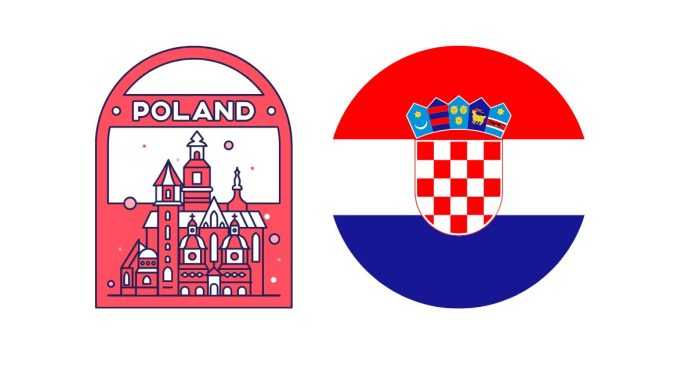When learning about languages, especially those from different countries in Europe, it’s common to wonder how closely related they are. For example, Polish and Croatian are two distinct languages spoken in different parts of Europe—Polish in Poland and Croatian in Croatia—but are they actually similar?
In this blog post, we’ll dive into the linguistic features of both languages, exploring their similarities, differences, and what makes each language unique. Whether you’re a language enthusiast, planning a trip, or just curious, this comparison will shed light on whether Polish and Croatian share common traits.
Language Families: A Key to Understanding
To begin, it’s important to understand the language families both languages belong to. Polish and Croatian come from different branches of the larger Indo-European language family:
- Polish: Polish is a part of the West Slavic branch, which includes languages like Czech, Slovak, and Sorbian. It shares common roots with languages spoken in Central and Eastern Europe, particularly those that evolved from Old Church Slavonic.
- Croatian: Croatian, on the other hand, belongs to the South Slavic branch. It is closely related to other languages like Serbian, Bosnian, and Montenegrin, all of which form what is known as the Serbo-Croatian language group.
While both languages are Slavic, the fact that Polish is West Slavic and Croatian is South Slavic already sets them apart in terms of origin and development.
Similarities: Shared Slavic Roots
Despite belonging to different branches of the Slavic family, Polish and Croatian still share some linguistic similarities. These similarities are mostly rooted in their Slavic ancestry:
- Vocabulary: Both languages share a significant number of cognates (words that have a common origin). For example, words related to family, nature, and everyday life may be similar. In Polish, “brat” means brother, while in Croatian, it’s “brat” as well.
- Grammar Structure: Both Polish and Croatian have complex grammatical systems, including cases (nouns changing their form depending on their role in a sentence) and gender (masculine, feminine, neuter). This is a common trait in many Slavic languages.
- Consonant Clusters: Both languages tend to have challenging consonant clusters, making them somewhat difficult to pronounce for non-native speakers. For example, the word “przyjaciel” in Polish (meaning friend) and “prijatelj” in Croatian (also meaning friend) showcase similar consonant formations.
Key Differences: A Look Beyond the Surface
Even though Polish and Croatian share some traits due to their Slavic roots, they are also quite different in many ways. Here are some key differences:
- Pronunciation: One of the most noticeable differences is pronunciation. Polish has some sounds that are not found in Croatian, such as nasal vowels. Polish is also known for its distinctive “ł” sound, which is similar to the English “w” sound. Croatian, on the other hand, has a more straightforward pronunciation that is closer to its spelling.
- Alphabet: Polish uses the Latin alphabet with some additional letters like “ą,” “ę,” and “ł,” while Croatian also uses the Latin alphabet but has its own set of unique characters like “č,” “ć,” and “ž.” Although they both use the Latin script, the characters and pronunciation rules differ in subtle but important ways.
- Influence of Other Languages: Due to its historical context, Polish has been influenced by languages like German, Russian, and French, while Croatian has experienced significant influence from Italian and Turkish, given its proximity to the Mediterranean and Ottoman Empire. This is reflected in vocabulary, expressions, and even cultural nuances.
- Verb Conjugation and Tenses: Polish and Croatian both use verb conjugation, but they differ in the way tenses are used and formed. Croatian uses the future tense in a slightly different way, while Polish has a more complex system of past tenses.
Cultural and Historical Context
Beyond linguistic features, the historical and cultural contexts of Poland and Croatia also play a significant role in shaping their languages. Poland has a long history of being influenced by its larger neighbors, including Russia and Germany, which has impacted the evolution of the Polish language. Croatia, with its ties to the former Yugoslavia and its Mediterranean influences, developed in a different direction.
The shared Slavic heritage is present, but both languages have been shaped by distinct historical and political forces, leading to unique developments in vocabulary, syntax, and usage.
Can Polish Speakers Understand Croatian (and Vice Versa)?
Since Polish and Croatian are both Slavic languages, it’s possible for speakers of one language to recognize some words and phrases in the other. However, mutual intelligibility between Polish and Croatian is limited. A Polish speaker may be able to understand some basic Croatian words or phrases due to their shared Slavic origins, but the differences in pronunciation, grammar, and vocabulary make full comprehension challenging without prior exposure to the other language.
In contrast, Croatian speakers may find it easier to understand other South Slavic languages like Serbian or Bosnian due to their higher level of mutual intelligibility. Polish, however, is more distantly related to these languages, so comprehension would require more effort.
Are Polish and Croatian Similar?
In conclusion, while Polish and Croatian share some similarities as Slavic languages, they are distinct from each other in many key aspects. Their roots in different branches of the Slavic language family, as well as differences in pronunciation, grammar, and vocabulary, make them quite separate languages. While there may be some crossover due to shared Slavic heritage, understanding one does not automatically guarantee understanding the other.
If you’re learning Polish or Croatian, you’ll encounter unique challenges and nuances that set each language apart. Still, their shared history means that speakers of both languages can appreciate the common linguistic bond they share, even if they are distinct in their own right.


